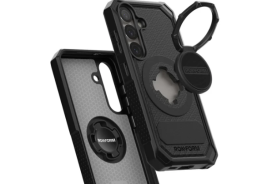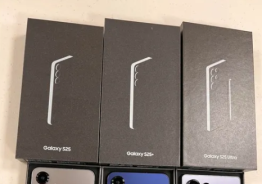The new LG G4 flagship made its official debut gunning for the Samsung Galaxy S6, so here's how the two smartphones stack up against each other.
Both the Samsung Galaxy S6 and the LG G4 aim to improve the design and cameras of their predecessors, as well as a few other aspects, but there are some key differences as well between the new flagships. These differences may have a big say in consumers' decision to purchase one smartphone over the other, so here's the deal.
Design
In the design department, high-end flagships for 2015 have generally set a goal to boast a more premium design compared to previous iterations. The Samsung Galaxy S6 ditched the infamous all-plastic design of its predecessor, replacing it with a metal frame and a glass back. The LG G4, meanwhile, comes with a plastic frame and a genuine leather back (see image above), or a rear cover option that mixes ceramics and plastic. Both flagships were rumored to come with full-metal designs, and many consumers would have preferred it instead of the actual materials they use.
The Samsung Galaxy S6 looks a bit better than the LG G4, but the leather back on the latter contributes to a better grip and a more pleasant feel in the hand. Ultimately, it will come down to consumer preference.
Size
With a larger screen, the LG G4 is also bigger and heavier than the Galaxy S6. Samsung's latest flagship weighs 138 grams and measures 143.4 x 70.5 x 6.8 mm, while the LG G4 tips the scales at 155 grams and measures 148.9 x 76.1 x 9.8 mm. The LG G4 is also bigger and heavier than its predecessor as well.
Display
Both the Samsung Galaxy S6 and the LG G4 boast top-notch displays with a QHD resolution of 2560 x 1440 pixels, but the two sport different screen sizes. The LG G4 has a 5.5-inch display, while the Galaxy S6 has a 5.1-inch screen. This means that the Galaxy S6 will have a higher pixel density.
Under the hood
Both LG and Samsung steered away from the overheating Qualcomm Snapdragon 810 64-bit octa-core processor for their new-generation flagships. The Galaxy S6 packs an in-house Exynos octa-core processor with four Cortex-A53 cores and four Cortex-A57 cores.
The LG G4, meanwhile, is powered by a hexa-core Qualcomm Snapdragon 808 processor, making LG the first company to go for this option in a flagship smartphone. LG reportedly decided to go for the Snapdragon 808 because the Snapdragon 810 chip raised some concerns related to overheating. The Snapdragon 808 has four Cortex-A53 cores and two Cortex-A57 cores.
Storage
The Samsung Galaxy S6 comes in three internal storage configurations, offering 32GB, 64GB, or 128GB choices, and has no microSD support for additional storage. The LG G4, meanwhile, comes in a single configuration with 32GB of internal storage capacity, but features a microSD card slot for additional memory of up to 128GB. Based on consumer responses so far, the optimum choice would be 64GB of internal storage expandable via microSD, and neither the Galaxy S6 nor the LG G4 offer this option.
Camera
Both the LG G4 and the Samsung Galaxy S6 boast high-end cameras, sporting notable upgrades over their respective predecessors as well. Both new flagships feature 16-megapixel rear shooters, complete with high-end features such as optical image stabilization (OIS) and others. When it comes to front cameras, however, the LG G4 may win the race, as it boasts an 8-megapixel front shooter compared to the 5-megapixel selfie cam of the Samsung Galaxy S6.
Battery
The Samsung Galaxy S6 has a 2,550 mAh battery at its core, which may prove to be insufficient for a long battery life. The LG G4, meanwhile, has a larger 3,000 mAh battery, albeit it also has to power a larger display. It remains to be seen how the LG G4 battery performs with real life usage, as the handset just made its debut and it's too soon to tell just yet.
Bottom line
Both the Samsung Galaxy S6 and the LG G4 come with top-notch specs and features all around, and there are plenty of other aspects not mentioned here that may play a role in consumers' decision to go for one flagship over the other. Both are truly powerful devices that should be able to handle virtually any task you throw at them, but it will ultimately come down to personal needs and preferences.
© Copyright 2025 Mobile & Apps, All rights reserved. Do not reproduce without permission.














